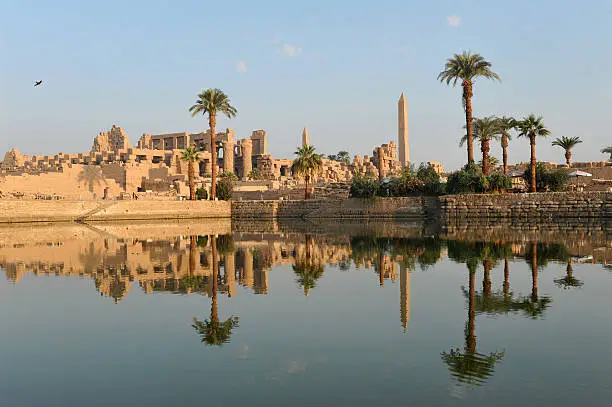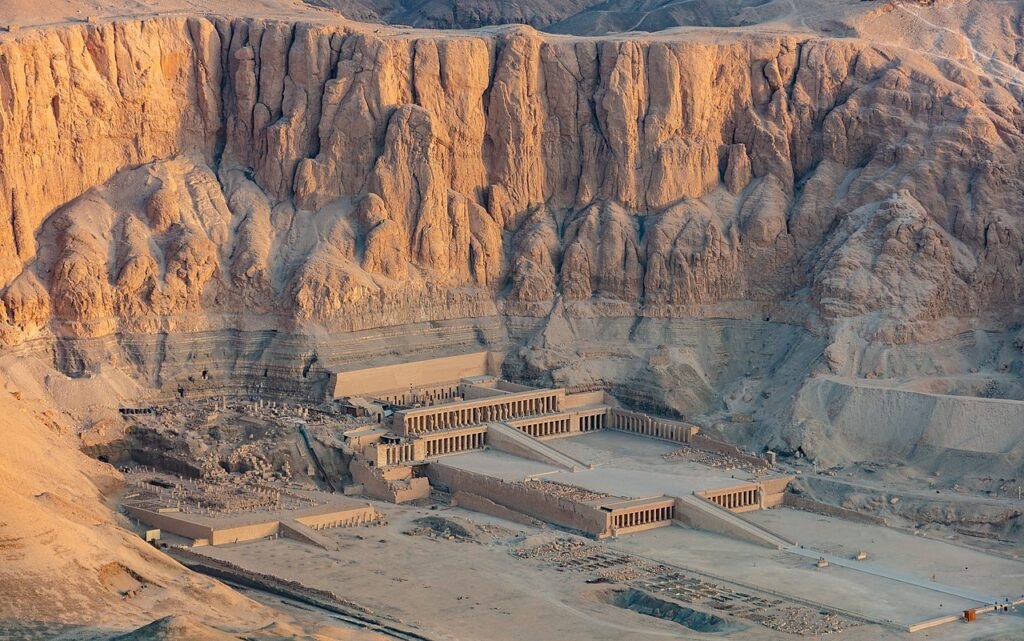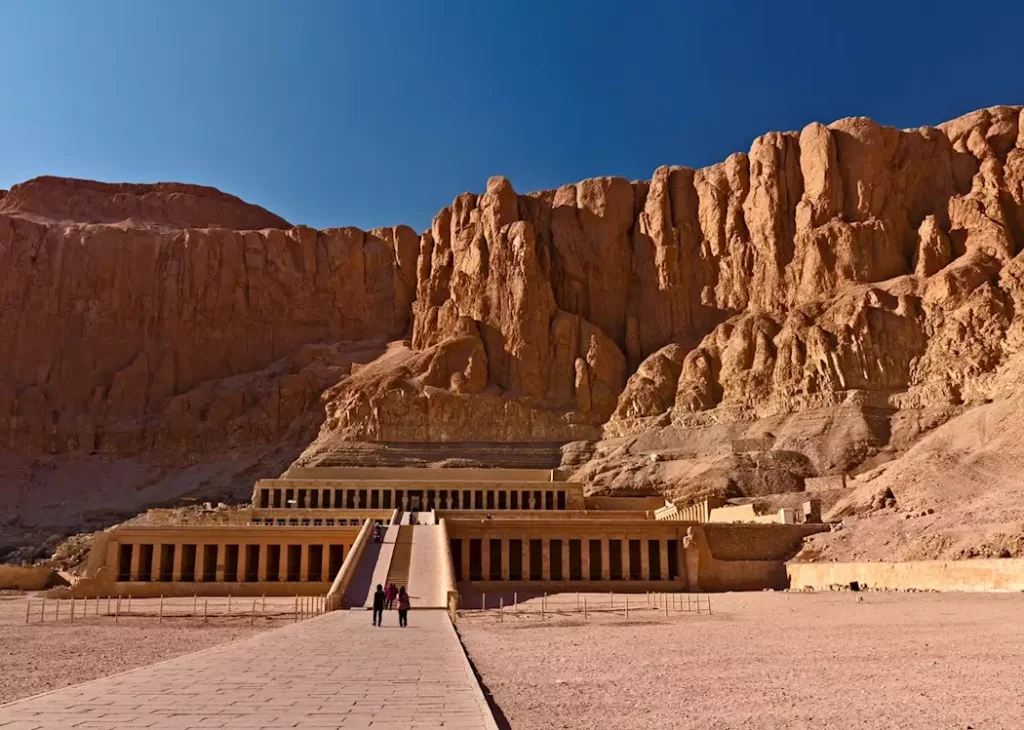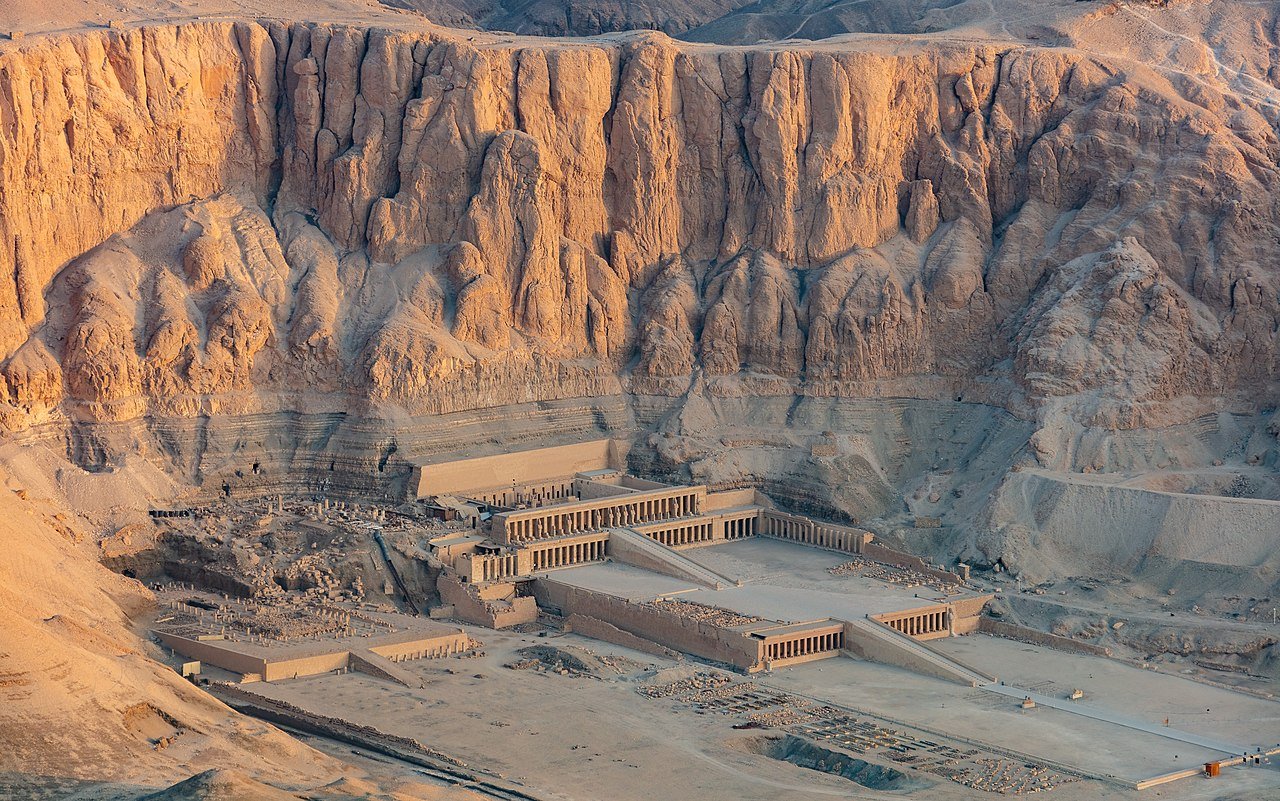Tourism in Luxor is not just a trip; it’s a journey back in time. If Cairo is the bustling political capital, Luxor is the historic, warm heart of Egypt. Many describe it as “the world’s largest open-air museum,” and they are correct. But that description, while accurate, doesn’t tell the whole story. Luxor isn’t just about “stones” and magnificent temples; it’s a “feeling.” It’s a unique human experience, a blend of the awe-inspiring history stretching back millennia, and the genuine, warm hospitality you’ll see in the eyes of its “kind people” everywhere.
In this ultimate guide, we will explore every facet of tourism in Luxor. We’ll go beyond the temples to discover the city’s soul, helping you plan a trip that is not just a vacation, but a life-changing experience. This is why tourism in Luxor remains a top priority for travelers worldwide.
Luxor Through a Traveler’s Eyes: A City of Two Banks
The great Nile River splits Luxor in two, and each half has its own distinct character, rooted in ancient Egyptian philosophy:
- The East Bank (City of the Living): Where the sun rises. This is where the ancient Egyptians lived, worshipped, and celebrated. Today, it’s the vibrant, modern side of the city, home to Luxor Temple, the colossal Karnak Temples, the hotels, markets, and the buzz of daily life.
- The West Bank (City of the Dead): Where the sun sets. This is where the pharaohs and nobles began their journey into the afterlife. It’s the quieter, more rural side, a vast necropolis home to the Valley of the Kings, the Valley of the Queens, the Temple of Hatshepsut, and the Colossi of Memnon.
The East Bank: The Living Heart of Tourism in Luxor
Your exploration will likely begin on the East Bank, a place of stunning energy. The main attractions here are connected by a beautiful, newly restored avenue, the “Avenue of Sphinxes.”
1. Karnak Temples: A Forest of Colossal Columns
Nothing can prepare you for the sheer scale of Karnak. This is not a single temple, but a massive complex built, dismantled, and expanded by over 30 pharaohs over 2,000 years. Its most breathtaking feature is the Great Hypostyle Hall, a forest of 134 giant columns, each 21 meters high. Walking through them is a humbling experience. Don’t miss the Sound and Light show at night; it’s a dramatic retelling of Thebes’ history.

2. Luxor Temple: The Magic of Sunset and Nighttime Illumination
Resting elegantly in the heart of the city, Luxor Temple is connected to Karnak by the 2.7km Avenue of Sphinxes. Pro Tip: Visit Luxor Temple about an hour before sunset. Watch the details of the columns and the massive statues of Ramesses II turn golden as the sun dips, and then stay to see the entire complex illuminated by night. It’s a magical scene that connects you directly to the past.
3. Luxor Museum
Often overlooked, the Luxor Museum is a modern masterpiece of curation. Unlike the old Cairo museum, this one is spacious, dark, and beautifully lit, focusing on quality over quantity. It houses a small but stunning collection of artifacts found in the Luxor area, including two royal mummies and a breathtaking collection of statues found in a cache at Luxor Temple.
The West Bank: Journey into the Afterlife
A short ferry or motorboat ride across the Nile transports you to another world. The West Bank is quieter, greener, and home to some of the most famous archaeological sites on Earth.
1. Valley of the Kings: Face-to-Face with the Pharaohs
This is the highlight of tourism in Luxor. Tucked away in a desolate desert valley, this was the secret burial ground for pharaohs of the New Kingdom. Your ticket grants you entry to three tombs (the most famous, Tutankhamun’s, requires a separate ticket). Descending into a tomb like that of Ramesses IV or Seti I, you’re met with colors so vibrant they look like they were painted yesterday. The intricate texts covering the walls are guides for the king’s journey into the afterlife.

2. Temple of Hatshepsut (Deir el-Bahri)
This temple is an architectural marvel. With its modern-looking, multi-terraced design carved directly into a limestone mountain cliff, it feels impossibly grand. It’s dedicated to Queen Hatshepsut, one of the most powerful female pharaohs in history. The view from the top terrace over the entire valley is a reward in itself. This stop is a cornerstone of tourism in Luxor.
3. Valley of the Queens & Medinet Habu (The Hidden Gems)
While the kings have their valley, the queens and royal children have theirs. The star here is the Tomb of Nefertari (Ramesses II’s wife), which requires a special ticket but is widely considered the “Sistine Chapel” of Ancient Egypt for its stunningly detailed and preserved paintings. Nearby, the Mortuary Temple of Ramesses III at Medinet Habu is one of the best-preserved and most massive temples. Its walls are covered in incredible reliefs of ancient battles, offering a raw look into the pharaoh’s power. These sites are less crowded but just as profound, offering a deeper look for those serious about tourism in Luxor.


Beyond the Temples: Unforgettable Luxor Experiences
Great tourism in Luxor goes beyond the ancient stones. It’s about unique experiences you can’t get anywhere else.
1. Hot Air Balloon Ride at Sunrise
This is a must-do. Waking up before dawn is a small price to pay for the experience of floating silently over the West Bank as the sun rises. You’ll see the green fields, the desert mountains, and the temples below from a god-like perspective. It’s a moment of pure magic and a highlight of tourism in Luxor.
2. A Felucca Sail at Sunset
Your visit is incomplete without a “Felucca” (traditional sailboat) ride on the Nile at sunset. There’s no motor, no sound but the wind in the sail and the lapping of the water. The boat captain, often from a local family that has sailed the Nile for generations, will offer you mint tea with a simple, warm smile. This quiet, reflective moment is the essence of Luxor’s charm.
The Soul of Luxor: The People, Culture & Food
This is what you requested, and it’s the real secret. The monuments are stunning, but the people are what make your trip unforgettable. The tourism in Luxor, especially in the villages of the West Bank, feels like a genuine welcome. People are warm, quick to smile, and proud of their heritage.
Don’t be afraid to explore the local souks (markets). Move past the main tourist bazaar and try walking through the local “vegetable market.” Watch the farmers display their produce, smell the local spices, and try a fresh juice. This is where you feel the heartbeat of the city. The human side of tourism in Luxor is its greatest, unadvertised asset.
Practical Tips for Flawless Tourism in Luxor
A little planning goes a long way. Here are our essential tips.
- Best Time to Visit: October to April. The weather is perfect for sightseeing. (Summer, from May to September, is intensely hot).
- What to Wear: Light, comfortable cotton clothes, a hat, and sunglasses. Most importantly: very comfortable walking shoes. You will be walking miles a day.
- Getting Around: Taxis, horse-drawn carriages (Kalesh), and tuk-tuks are common. Always agree on a price *before* you start your trip. For the West Bank, hiring a car and driver for the day is the most efficient option.
- Tipping (Baksheesh): It’s part of the culture for services rendered. Carry small change (5, 10, 20 EGP notes) for bathroom attendants, guards, and small favors.
- External Link: Luxor, or ancient “Thebes,” is so important that it is designated as a UNESCO World Heritage Site.
Luxor Isn’t Just a Visit, It’s an Experience
In the end, tourism in Luxor isn’t just about seeing ruins; it’s about “feeling” time. You will leave the city with photos of temples, but more importantly, a memory of a warm smile from your guide, a joke from a carriage driver, or a cup of tea from a felucca captain. The tourism in Luxor will change you.
It’s a city that combines the majesty of history with the simple warmth of its people. This is the magic of tourism in Luxor.
Ready to live the real Luxor experience? We’ve designed packages that combine the majesty of history with the warmth of hospitality. Check our Luxor Tours here!

